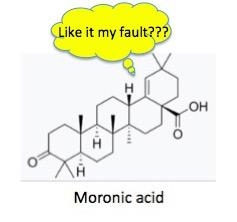
Nomenclature – the "art" of naming organic chemicals – is crazy making. That's because multiple systems of nomenclature are used to describe chemical compounds. Some of them make sense because the name can be used to determine the structure of the chemical (and vice versa); these are called systematic names. Some of the names make no sense at all; they are just names which give no information about the chemical.
To show how insane nomenclature can be, here are some of the names of one of the simplest organic chemicals in the world - isopropyl alcohol, which is commonly known as "rubbing alcohol."
I’m 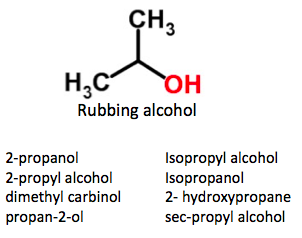
Keeping it simple. Eight different names for rubbing alcohol (1). And you wonder why only dipsticks become chemists?
Aside from "rubbing alcohol," all eight of the names for isopropyl alcohol (commonly called IPA, so that makes nine) are "correct" - any organic chemist would be able to look at the names and draw the chemical structure above or look at the structure and come up with at least most of those names.
Nine names for a simple solvent? Why? It's because the nomenclature of organic compounds is an unadulterated nightmare, consisting of "systematic" names - those that identify specific structures and “trivial names,” which have nothing to do with the structure of the chemical and can be pretty crazy.
Although systematic names are technically identifiers of any unique chemical structure this doesn't mean that a chemist can necessarily convert the name to a structure or the other way around. Some of them are too complicated to figure out (2). For example, the monster below has two very different names. Which would you pick?
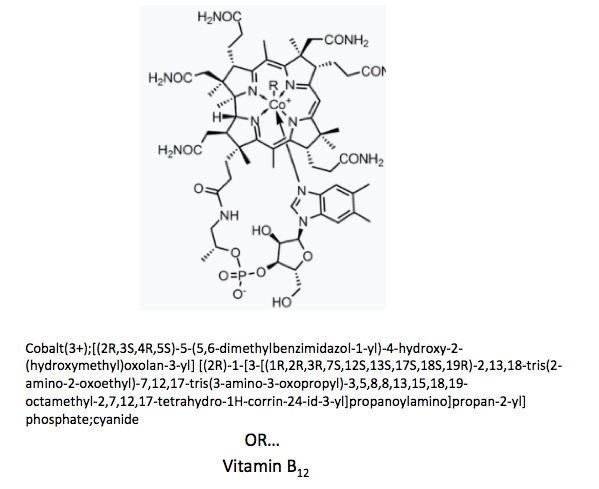
The structure and two rather different names for one vitamin. Madness.
While systematic names, even the sicko ones like above, at least (nominally) identify a single chemical, trivial names do not. These names come from all over the place. Some were named hundreds of years ago, some are named after a living organism from which they were isolated, once in a while some egomaniac will name one after himself. You name it. They can be rather amusing. Let's take a look at three sub-categories of chemicals that have trivial names...
1. NATURAL PRODUCTS NAMED AFTER THEIR SOURCES
Enormous numbers of organic chemicals are found in nature, especially from plants and marine life. Their names are somewhat logical since they are often named after the source of the chemical (Figure 1).

Figure 1. (Left) The name skatole, aka 3-methylindole, is derived from skato - Greek for feces. Open a bottle of it and you'll see why. Yuck! But in low concentrations, skatole is used in perfumes. Perhaps the expression "you smell like s###" was derived from this, but I doubt it. (Center) Cadaverine, aka, 1,5-diaminopentane, is one of the polyamines that form in decomposing flesh. You won't enjoy this one either. They not only smell like death, but they also smell like semen - perhaps an olfactory treatise on the cyclic nature of life. (Right) Cinnamaldehyde - a chemical that comes from the bark of the cinnamon tree (aren't we organic chemists clever?) gives cinnamon its flavor and scent. (3)
2. NATURAL PRODUCTS WITH PLAIN OLD CRAZY NAMES
Some chemicals, especially natural products, end up with names that appeal to our inner juvenile idiot. Their names - all are trivial names - may or may not have anything to do with the chemical's source or what its properties. (Figure 2).

Figure 2. (Left) Moronic acid can be isolated from mistletoe and sumac. It possesses neither intellect nor the lack of it, but it is quite poisonous. It also forms the basis for a pretty good insult if you leave off the "-id." (Center) Constipatic acid (probably my favorite) has nothing to do with sitting in agonizing futility on the porcelain throne awaiting the blessed event. It is simply one of many natural products derived from the Xanthoparmelia lichen. I can find no good explanation for its name nor do I really care. It just cracks me up. This is officially open for speculation, so readers - give it your best. (Right) What the name vomitoxin lacks in subtlety it makes up for in accuracy. The chemical is a mycotoxin - a toxic metabolite made by fungus. A well-known family of chemicals in this class are the aflatoxins - carcinogenic and highly toxic metabolites of Aspergillus molds. Vomiting is the least of your problems if you ingest enough of these compounds, which form when grains, nuts, and corn sit around in warm, moist conditions.
3. CHEMICALS WITH INTENTIONALLY PROVOCATIVE NAMES
Remember that chemistry sense of humor I alluded to? It's rare, but apparently, some others have it, not just yours truly. How else can you possibly explain these? (Figure 3). All of these are synthetic reagents - chemicals that are used to convert one chemical substance to another.
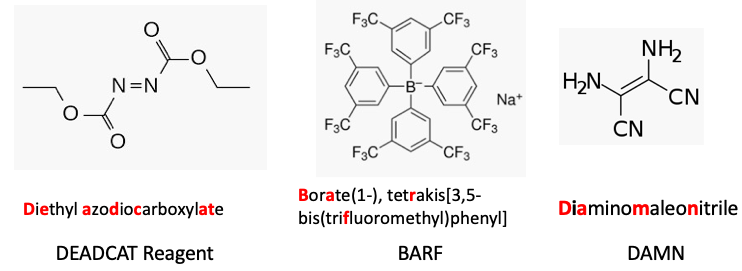
Figure 3. Synthetic chemicals with intentionally juvenile or provocative names.
Contest: Anyone wanna make these into a sentence? I'll start:
"Damn, that dead cat on my lawn made me want to barf."
4. THIS POOR GUY CAN'T HELP IT
Like the DIck Hertz's, Hugh G. Reckshun's and Lewis Stewlz's of the world, sometimes chemicals just get stuck with a bad name. This one is very bad, but it is also chemically correct. Poor guy. Here's why it's correct. Five-membered rings sometimes end in -ole. Nomenclature rules. Here are three of them.
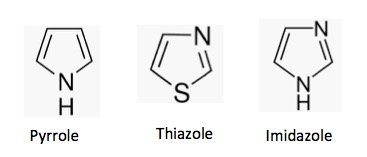
So it should not be surprising that these guys have a relative that contains arsenic as part of the ring...
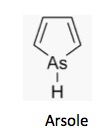
Let's open up the contest and let this unfortunate fellow in too. I won't play. Yet.
Let 'em rip, boys and girls. Do you worst.
NOTE:
(1) Ethanol is also called rubbing alcohol (just what we need). To prevent imbibers from buying it from a pharmacy shelf it is denatured - made undrinkable. Methanol (wood alcohol) is commonly added as a poison to prevent people from drinking the alcohol.
(2) Before computers named chemical compounds, someone had to do it. There were actual chemical nomenclature specialists who sat around and named these damn things all day. They looked a bit like this...
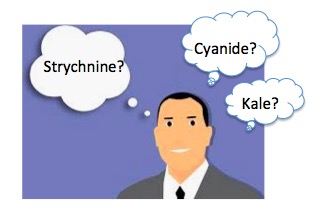
Nomenclature Specialist ca., 1961
(3) No - it doesn't matter whether the cinnamaldehyde comes from the tree or a factory. The two are identical. The "natural" flavor is identical to the "artificial" flavor."



